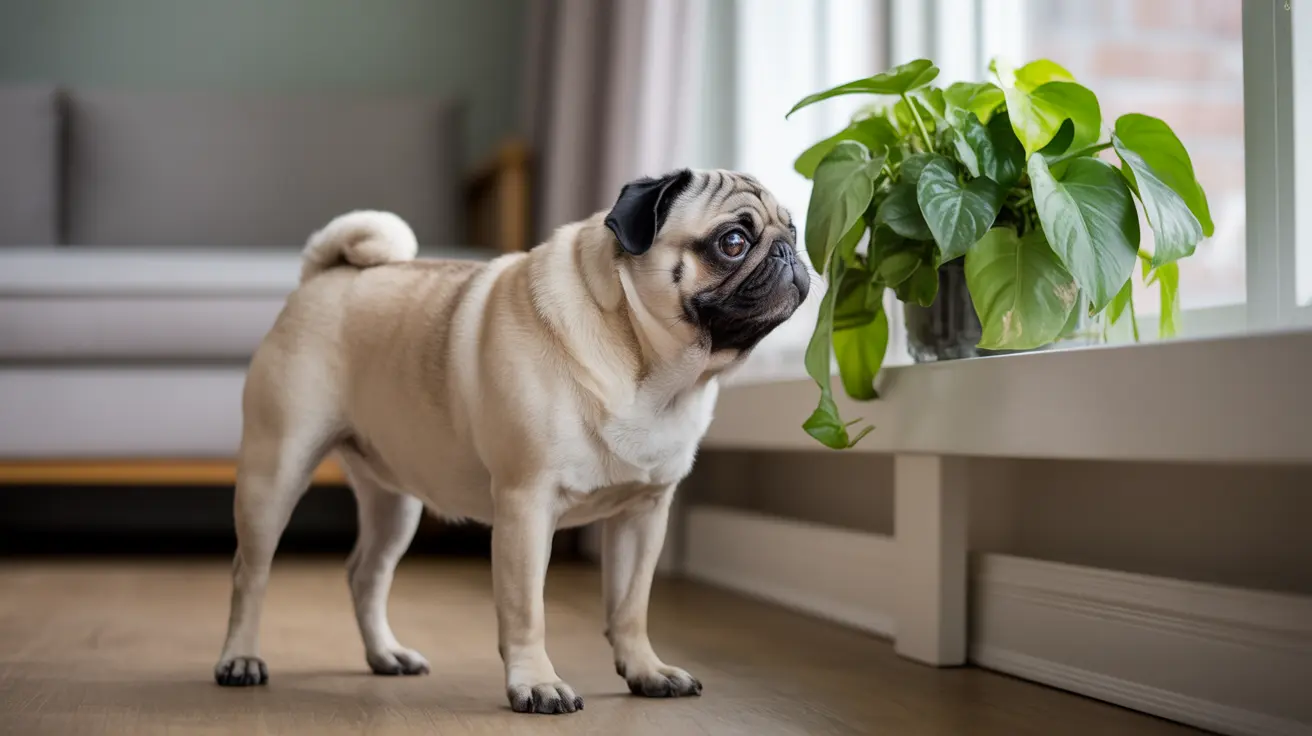If you're a plant enthusiast with pets, you might be wondering about the safety of the trendy Rhaphidophora tetrasperma, commonly known as Mini Monstera. This comprehensive guide will help you understand the risks this popular houseplant poses to your furry friends and what steps you can take to ensure their safety.
While Rhaphidophora tetrasperma is celebrated for its beautiful split leaves and compact growth habit, it's important to know that this plant is not pet safe. In fact, it contains compounds that can cause serious discomfort and health issues in cats and dogs.
Understanding Rhaphidophora Tetrasperma's Toxicity
Rhaphidophora tetrasperma contains insoluble calcium oxalate crystals, which are toxic to both cats and dogs. These microscopic crystals, called raphides, can cause immediate irritation when your pet chews or bites the plant. The crystals penetrate the sensitive tissues in your pet's mouth, throat, and digestive system, leading to various uncomfortable symptoms.
The Science Behind the Toxicity
When an animal bites into any part of the plant - leaves, stems, or roots - the calcium oxalate crystals are released. These sharp crystals act like tiny needles, embedding themselves in the soft tissues and causing intense irritation and inflammation.
Signs Your Pet Has Been Exposed
If your pet has come into contact with Rhaphidophora tetrasperma, you may notice several immediate symptoms:
- Excessive drooling
- Pawing at the mouth
- Swelling of the tongue and lips
- Difficulty swallowing
- Vomiting
- Loss of appetite
- Vocal signs of distress
Safety Measures for Pet Owners
If you already own a Rhaphidophora tetrasperma and have pets, consider these safety precautions:
Physical Barriers
- Place plants in hanging baskets well out of reach
- Use dedicated plant rooms that remain closed to pets
- Install sturdy plant stands or wall-mounted shelves
- Consider glass cabinets or terrariums
Training and Deterrents
- Use pet-safe bitter sprays on and around pots
- Provide alternative pet-safe plants for curious cats
- Ensure adequate environmental enrichment to reduce plant-chewing behavior
Pet-Safe Alternatives to Consider
Instead of Rhaphidophora tetrasperma, consider these pet-friendly options that can still satisfy your plant parenthood desires:
- Spider Plants (Chlorophytum comosum)
- Boston Ferns (Nephrolepis exaltata)
- African Violets (Saintpaulia)
- Calatheas
- Peperomias
- Swedish Ivy (Plectranthus verticillatus)
Emergency Response and First Aid
If you suspect your pet has ingested any part of a Rhaphidophora tetrasperma:
- Remove any visible plant material from their mouth
- Rinse their mouth gently with water if possible
- Contact your veterinarian immediately
- Monitor for signs of respiratory distress
- Keep the plant for identification purposes
Frequently Asked Questions
Is Rhaphidophora tetrasperma toxic to cats and dogs?
Yes, Rhaphidophora tetrasperma is toxic to both cats and dogs due to its calcium oxalate crystal content, which can cause immediate irritation and discomfort if ingested.
What symptoms should I watch for if my pet chews on a Rhaphidophora tetrasperma plant?
Watch for excessive drooling, pawing at the mouth, swelling of oral tissues, difficulty swallowing, vomiting, and signs of pain or distress. These symptoms typically appear immediately after contact.
How can I keep my pets safe if I have Rhaphidophora tetrasperma at home?
Keep the plant completely out of reach using hanging baskets, high shelves, or closed rooms. Consider rehoming the plant or replacing it with pet-safe alternatives if you can't ensure complete separation.
What first aid steps should I take if my cat or dog ingests Rhaphidophora tetrasperma?
Immediately remove any plant material from their mouth, rinse their mouth with water if possible, and contact your veterinarian. Don't induce vomiting unless specifically instructed by a professional.
Which houseplants are safe alternatives to Rhaphidophora tetrasperma for pet owners?
Safe alternatives include Spider Plants, Boston Ferns, African Violets, Calatheas, Peperomias, and Swedish Ivy. These plants can provide similar aesthetic appeal without the risk of toxicity to your pets.
Creating a safe environment for both your plants and pets requires careful consideration and planning. While Rhaphidophora tetrasperma is a beautiful plant, the health and safety of your pets should always come first. Consider the pet-safe alternatives mentioned above to maintain a stylish yet secure home for all your family members, both two-legged and four-legged.






